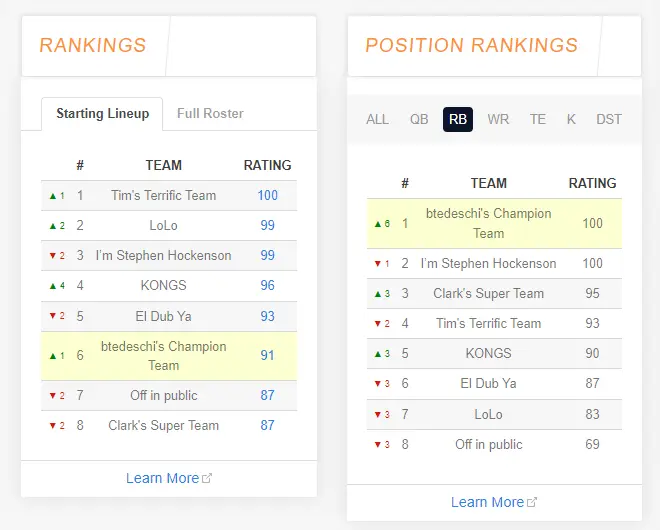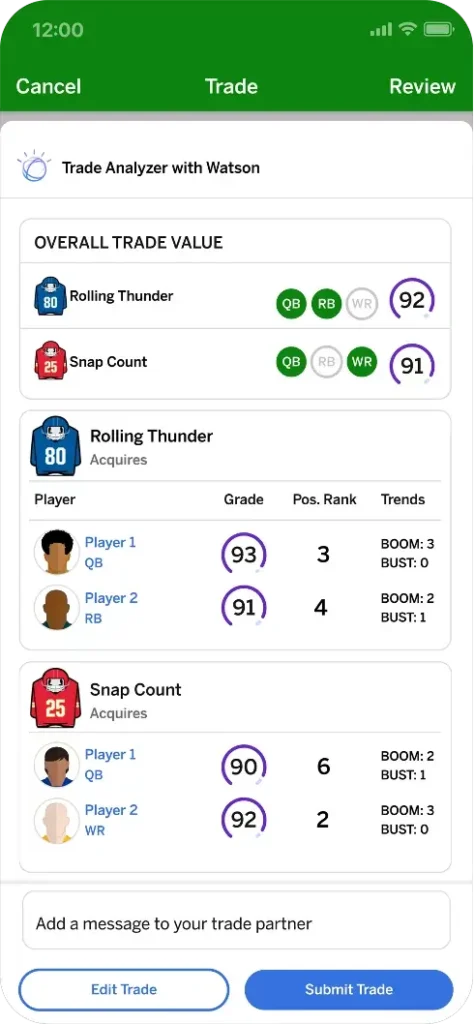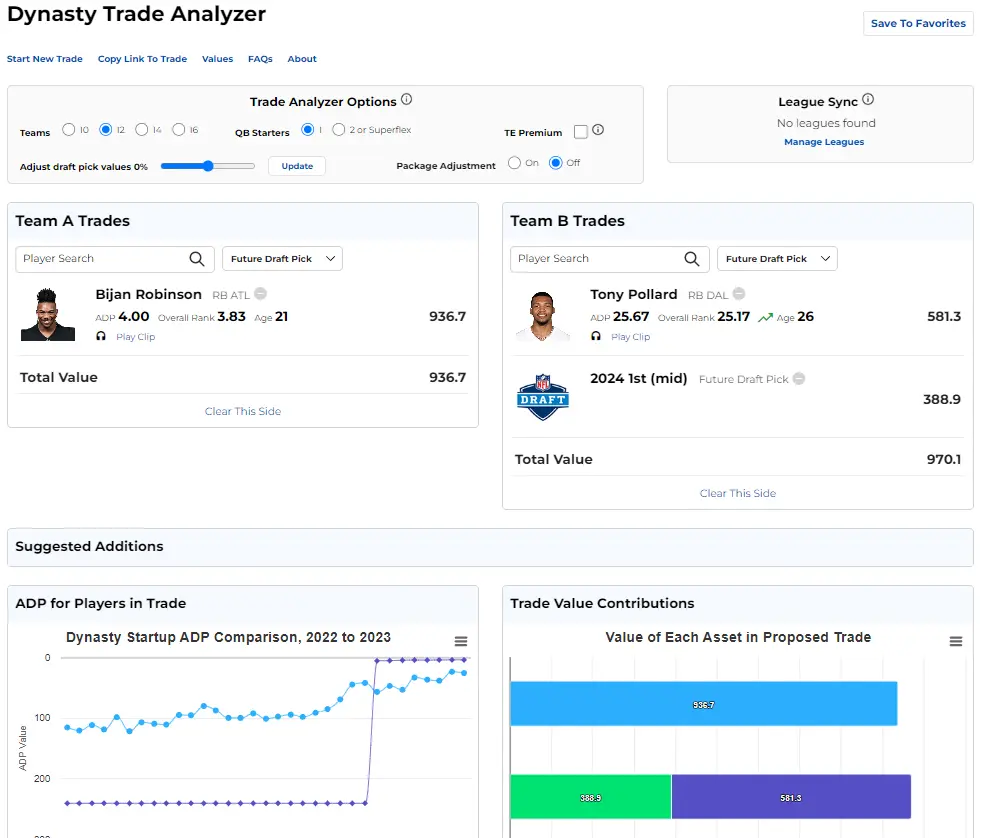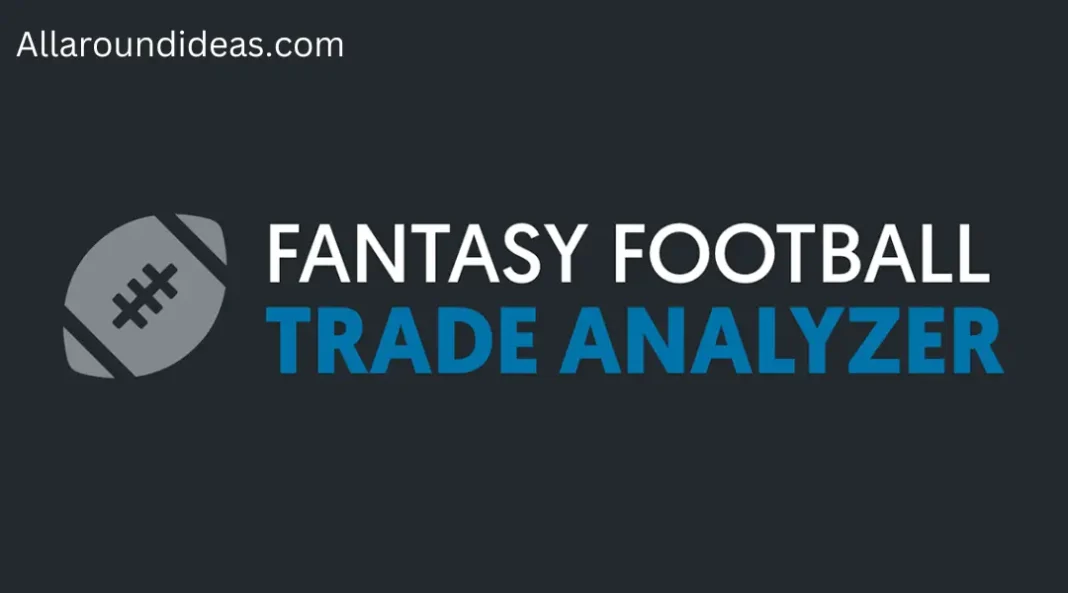Fantasy football Trade Analyzer is a game of strategy, skill, and just the right amount of luck. While drafting the perfect team is crucial, mid-season trades often separate the good teams from the championship contenders. A well-executed trade can turn a struggling team into a playoff threat, while a poor one can derail even the most promising season. This is where a fantasy football trade analyzer becomes an indispensable tool for players aiming to dominate their leagues.
A fantasy football trade analyzer evaluates the potential value of a trade by comparing the involved players’ projected performances, historical trends, and positional needs. In this article, we’ll explore how trade analyzers work, their key features, and how to effectively use one to improve your fantasy football team. By the end, you’ll be equipped to navigate your league’s trade market with confidence.
What is a Fantasy Football Trade Analyzer?
A fantasy football trade analyzer is a tool or software designed to help fantasy managers evaluate potential trades. It analyzes players’ statistical performance, injury history, positional scarcity, and team needs to assess the fairness and potential impact of a trade.
Trade analyzers often provide:
- Player Projections: Expected fantasy points for the rest of the season.
- Comparative Analysis: Direct comparisons of players in different positions or roles.
- Roster Impact: Insights into how the trade affects your team’s strengths and weaknesses.
- League Customization: Adjustments based on league settings, such as scoring formats, roster sizes, and player values.
Whether you’re in a standard league, PPR (points per reception), or dynasty format, a good trade analyzer helps you make data-driven decisions rather than relying solely on intuition.

If you want some more information about Bloomfield Tech HS NJ Logo then checkout out last blog post.
Why Use a Trade Analyzer?
Making trades in fantasy football can be tricky. It’s not just about swapping players; it’s about building a stronger, more competitive team. Here’s why using a trade analyzer can elevate your trade strategy:
- Objective Evaluation:
A trade analyzer removes bias. Fantasy managers often overvalue their own players or undervalue others. A trade analyzer provides an impartial perspective based on data. - Maximizing Value:
It’s not enough to win a trade; you need to ensure the players you’re acquiring significantly enhance your team’s performance. Trade analyzers identify undervalued assets and hidden gems. - Custom League Adaptability:
Trade analyzers can be tailored to specific league rules, like PPR scoring or bonuses for big plays. This ensures that evaluations align with your league’s scoring system. - Injury and Schedule Considerations:
Players’ value changes based on factors like injuries, upcoming schedules, or bye weeks. Trade analyzers integrate these variables to provide more accurate assessments. - Saving Time:
Researching every aspect of a trade manually can be time-consuming. Trade analyzers streamline the process, offering instant feedback.
Key Features of a Good Trade Analyzer
Not all trade analyzers are created equal. The best ones offer a blend of comprehensive data, user-friendly interfaces, and actionable insights. Here are the features to look for:
1. Custom League Settings
- Adjustments for scoring formats (standard, PPR, half-PPR, etc.).
- Incorporation of roster sizes and positional limits.
- Dynasty and keeper league compatibility.
2. Player Comparison Metrics
- Season-long and week-by-week projections.
- Historical performance trends.
- Risk factors, including injury history and consistency metrics.
3. Team Needs Assessment
- Roster analysis to identify positional strengths and weaknesses.
- Suggestions for balancing your lineup post-trade.
4. Schedule Analysis
- Insights into upcoming matchups and how they affect player value.
- Identifying players with favorable playoff schedules.
5. Trade Fairness Scoring
- A numerical or percentage-based score to determine trade balance.
- Alerts for lopsided trades to prevent regretful decisions.
6. Integration with Fantasy Platforms
- Compatibility with popular platforms like ESPN, Yahoo, NFL, and Sleeper.
- Ability to import your league data directly for accurate assessments.
7. Mobile Accessibility
- Availability as an app for on-the-go analysis.
- Real-time updates during the NFL season.
How to Use a Fantasy Football Trade Analyzer Effectively
Maximizing the value of a trade analyzer requires a thoughtful approach. Here’s a step-by-step guide to using one:
1. Input Your League Settings
Before analyzing a trade, ensure the analyzer is set up to reflect your league’s scoring system and roster rules. This ensures accuracy in player valuations.
2. Evaluate Your Team’s Needs
Assess your roster to identify weaknesses. Are you lacking a reliable RB2? Do you need a high-upside WR for the playoffs? Knowing your team’s gaps helps you target the right players.
3. Propose a Trade
Input the trade details, including all players involved. The analyzer will evaluate the trade’s fairness and impact on both teams.
4. Consider Positional Value
A top-tier running back often holds more value than a mid-tier wide receiver due to positional scarcity. The analyzer can highlight such discrepancies.
5. Analyze Long-Term Impact
For dynasty or keeper leagues, consider the trade’s implications beyond the current season. Trade analyzers often include projections for future years.
6. Review the Results
Examine the trade score and any recommendations provided. If the trade seems lopsided, explore adjustments that could balance it.
7. Cross-Check with Other Tools
While trade analyzers are helpful, combining their insights with expert advice, rankings, and waiver wire research provides a well-rounded perspective.

If you want some more information about Bloomfield Tech HS NJ Logo then checkout out last blog post.
Examples of Popular Trade Analyzers
1. FantasyPros Trade Analyzer
FantasyPros offers a robust trade analyzer that integrates seamlessly with your league. It provides player comparisons, rest-of-season projections, and insights into team needs. FantasyPros is ideal for managers seeking detailed evaluations.
2. ESPN Trade Analyzer
ESPN’s platform includes a basic trade analyzer tailored to its leagues. While less detailed than others, it’s convenient for users playing on ESPN.
3. Sleeper Trade Calculator
Sleeper is a popular app among fantasy football enthusiasts. Its trade analyzer considers league formats and includes dynamic updates based on real-time player news.
4. Rotowire Trade Analyzer
Rotowire’s tool excels in providing comprehensive projections and schedule analysis. It’s particularly useful for dynasty and keeper leagues.
5. Yahoo Fantasy Trade Evaluator
Yahoo’s trade analyzer is integrated into its platform and offers straightforward evaluations for users in Yahoo leagues.
Tips for Making Successful Trades
A trade analyzer is a valuable tool, but successful trading also requires strategy and negotiation skills. Here are some tips:
1. Know Your League Mates
Understand the tendencies of other managers. Are they conservative or aggressive traders? Tailoring your offers accordingly increases the likelihood of acceptance.
2. Sell High, Buy Low
Target players whose value is temporarily low due to poor performances or tough schedules, and trade away players performing above their usual level.
3. Consider Future Schedules
A player with favorable matchups during fantasy playoffs can be more valuable than one with tough opponents.
4. Avoid Overpaying for Big Names
Star players are enticing, but overpaying for them can weaken your roster depth. Use the trade analyzer to ensure fair value.
5. Stay Updated
Keep track of injuries, depth chart changes, and trade rumors. A well-timed trade can capitalize on emerging opportunities.
Potential Drawbacks of Trade Analyzers
While trade analyzers are incredibly useful, they’re not perfect. Here are some limitations to keep in mind:
- Over-Reliance on Projections: Projections are estimates, not guarantees. Player performances can be unpredictable.
- Neglecting Intangibles: Trade analyzers can’t account for factors like team morale, weather conditions, or unexpected coaching changes.
- Bias Towards High-Scoring Positions: Most trade analyzers prioritize positions like running back and wide receiver over less flashy roles like kicker or defense.

If you want some more information about Bloomfield Tech HS NJ Logo then checkout out last blog post.
Conclusion
A fantasy football trade analyzer is an essential tool for any manager looking to gain a competitive edge. By providing data-driven insights into player values, team needs, and trade fairness, it helps you make informed decisions that can transform your season. However, the best results come from combining a trade analyzer’s capabilities with your own knowledge, intuition, and strategic thinking.
Whether you’re trying to turn around a losing season or solidify your playoff chances, mastering the art of trading is key. With a reliable trade analyzer and a proactive approach, you’ll be well on your way to fantasy football glory.


